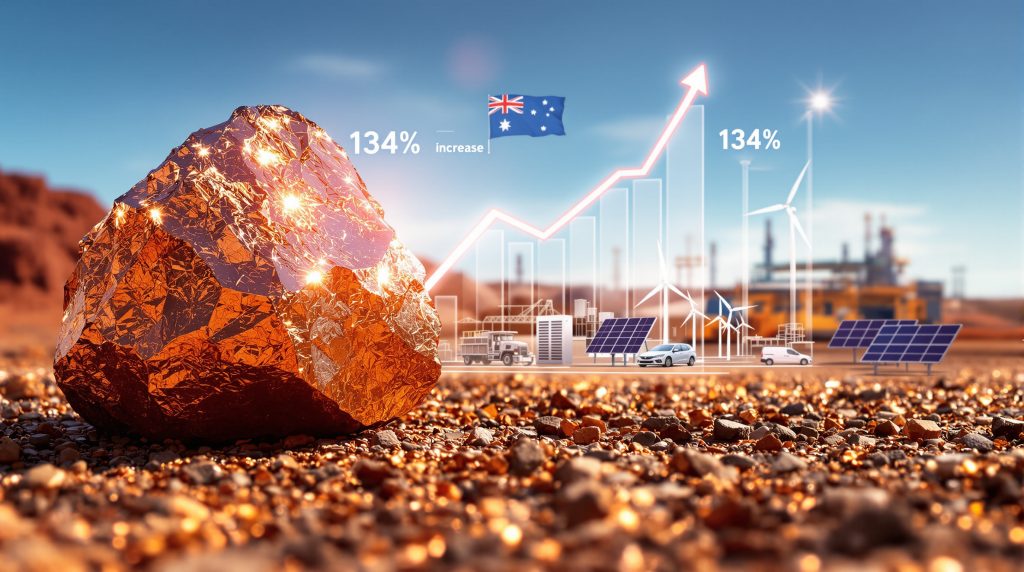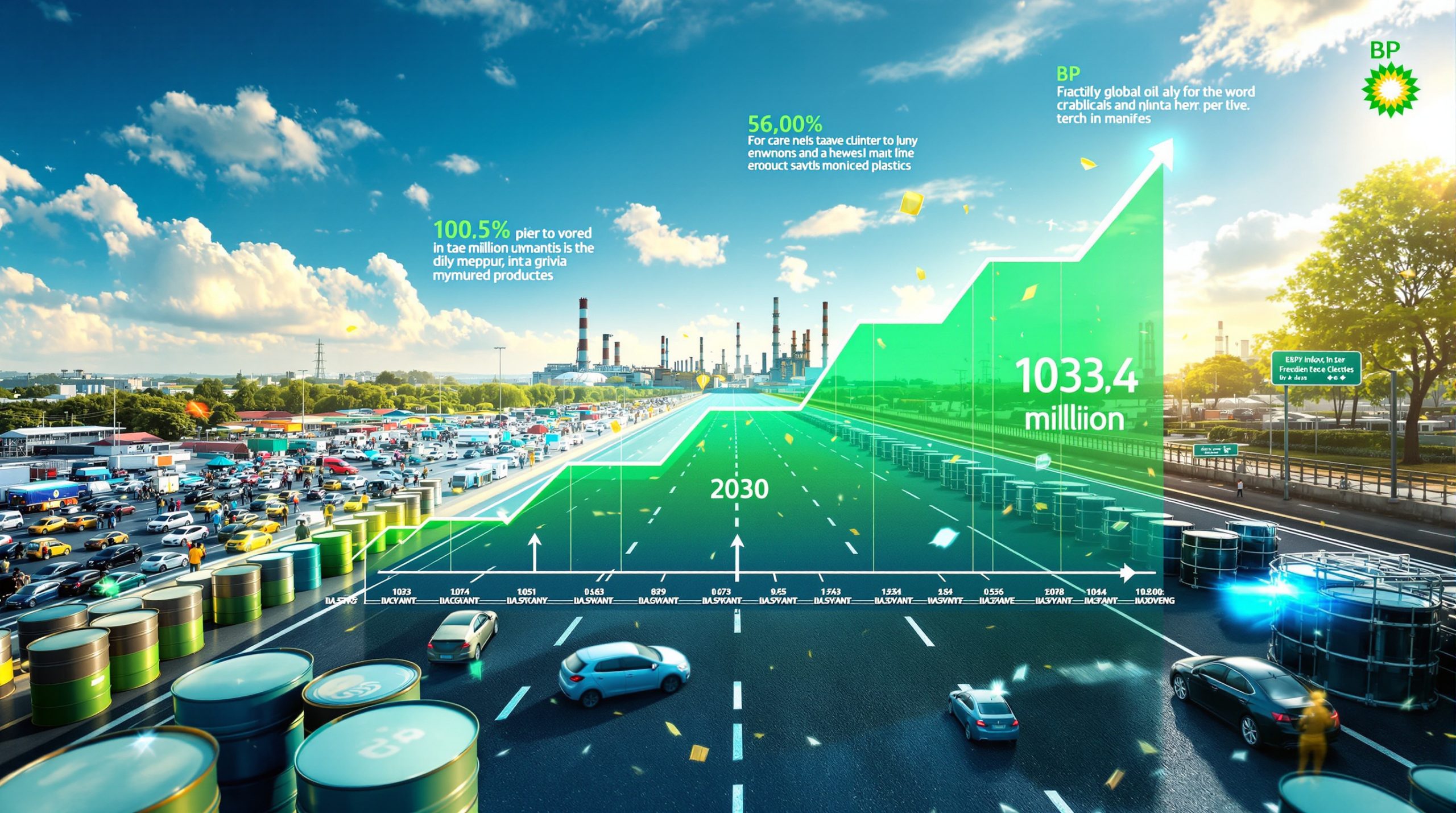South Australia's Copper Export Boom: Economic Impact and Future Growth
South Australia has firmly established itself as Australia's premier copper-producing region, with exports reaching record highs in the 2024-25 financial year. The state's copper export value surged to $4.3 billion, marking a significant 17% increase from the previous year according to SA Treasurer and Mining Minister Tom Koutsantonis.
This remarkable growth is transforming South Australia's economic landscape, with mining now recognized as "a pillar of the South Australian economy," as highlighted by Koutsantonis during his address at AIMEX 2025. The copper sector in particular has become the cornerstone of this mining boom, positioning the state as a globally significant player in critical minerals supply.
Historical Development of South Australian Copper Mining
The foundation of South Australia's copper industry dates back to the 1840s with the establishment of the Kapunda and Burra mines, which were among Australia's first metal mines. These early operations demonstrated the exceptional copper mineralization present throughout the state's geology.
The mid-20th century marked a significant expansion phase with the discovery of world-class deposits in the Olympic Dam region, fundamentally altering the trajectory of South Australia's mining sector. This discovery established the foundation for what would become one of the world's most significant polymetallic mining operations.
Between 2010 and 2025, production volumes increased by approximately 26%, reflecting both expanding operations at existing mines and technological improvements in extraction and processing capabilities. This growth period has cemented South Australia's position as Australia's copper heartland.
Current production metrics show approximately 3.23 million tonnes of copper being produced annually, with this figure projected to rise as expansion projects at key mines progress toward completion.
What Makes South Australia a Global Copper Powerhouse?
South Australia's emergence as a copper export powerhouse results from a unique combination of geological advantage, operational excellence, and strategic investment. The state's distinctive geological formations have created copper deposits that rival some of the world's most productive mining regions.
Rich Geological Endowment
The state's geological foundation provides an exceptional natural advantage, with the Olympic Dam region hosting one of the world's largest known copper-uranium-gold deposits. This remarkable mineral system extends several kilometers below the surface and contains copper mineralization at grades that support economically viable long-term mining operations.
The Stuart Shelf geological province, which hosts Olympic Dam and several other significant deposits, features ideal conditions for the formation of iron oxide-copper-gold (IOCG) deposits, a relatively rare but highly valuable deposit type. These formations typically yield higher copper grades than porphyry deposits found in many competing copper-producing regions.
Strategic Mining Operations
| Mine | Annual Production | Type | Operator |
|---|---|---|---|
| Olympic Dam | 216,000 tonnes | Copper cathode | BHP |
| Prominent Hill | 68,000 tonnes | Copper concentrate | OZ Minerals |
| Carrapateena | 50,000 tonnes | Copper concentrate | OZ Minerals |
Olympic Dam stands as the centerpiece of South Australia's copper industry, operating as one of the world's most significant polymetallic mines. Its unique position as both a major copper producer and a source of uranium, gold, and silver creates operational efficiencies that enhance its global copper outlook.
Prominent Hill and Carrapateena represent newer generation mines that have expanded South Australia's production capacity significantly in recent years. These operations utilize advanced mining techniques, including block caving and automated haulage systems, to optimize extraction from deeper deposits.
Advanced Processing Infrastructure
South Australia has developed sophisticated processing infrastructure that enables substantial value addition before export:
- State-of-the-art smelting facilities capable of converting ore to blister copper with 98.5-99.5% purity
- Electrolytic refineries producing high-grade copper cathodes at 99.99% purity
- Concentrate processing plants preparing mineral concentrates for export to international smelters
This processing capability allows South Australian producers to capture more value from their resources and supply products that meet the exacting specifications of global manufacturers.
What Drives Global Demand for South Australian Copper?
The remarkable growth in South Australia's copper exports is supported by powerful global demand drivers that show strong long-term growth potential. As Koutsantonis emphasized at AIMEX 2025, "decarbonization does not require less mining – it requires more mining," with copper at the "forefront of that decarbonization."
Clean Energy Transition
The global push toward renewable energy systems has dramatically increased surging copper demand across multiple sectors:
- Solar power infrastructure: Each megawatt of solar capacity requires approximately 5 tonnes of copper for conductors, transformers, and connection systems
- Wind power generation: Offshore wind turbines use up to 15 tonnes of copper per megawatt, with significant quantities in generators and transmission equipment
- Power grid expansion: Modernizing electricity networks to accommodate renewable integration requires extensive copper-based transmission and distribution infrastructure
The International Renewable Energy Agency projects global renewable capacity will need to triple by 2030 to meet climate goals, driving substantial copper demand growth.
Electric Vehicle Revolution
The automotive industry's transformation toward electrification creates unprecedented copper requirements:
- EV manufacturing: Electric vehicles typically contain 2-4 times more copper than conventional internal combustion vehicles, with 80-85 kg in an average battery electric car
- Charging infrastructure: Each DC fast-charging station requires 25-50 kg of copper for power delivery systems, cables, and connectivity
- Battery technologies: Advanced battery systems rely extensively on copper for cell connections, thermal management, and power distribution
With global EV sales projected to grow at 25-30% annually through 2030, copper demand from this sector alone is expected to more than double within five years.
Digital Infrastructure Growth
The expansion of data centers and telecommunications networks continues to drive substantial copper demand:
- Artificial intelligence: High-performance computing facilities supporting AI development require extensive copper wiring for power distribution and cooling systems
- 5G/6G networks: Advanced telecommunications infrastructure utilizes copper components for base stations, cell towers, and connection points
- Smart city technologies: Integrated urban systems for transportation, utilities, and public services depend on copper-based connectivity and power distribution networks
How Are South Australian Copper Exports Transported?
The logistics of moving copper from South Australian mines to global markets involves sophisticated supply chain management and specialized transportation infrastructure.
Export Pathways
South Australian copper reaches international markets through several key routes:
- Port Adelaide: Serves as the primary export hub for refined copper products, with dedicated facilities for handling copper cathodes and specialized copper products
- Port Pirie: Offers specialized facilities for copper concentrate handling, with infrastructure designed to manage the particular requirements of mineral concentrates
- Whyalla Port: Provides bulk shipping capabilities for copper ores, with capacity to accommodate large vessels for efficient international transport
These ports connect to international shipping lanes that service major manufacturing centers across Asia, particularly China, Japan, and South Korea, which remain the primary destinations for South Australian copper exports in South Australia.
Export Forms and Processing
Copper leaves South Australia in various forms, each representing different stages of processing and value addition:
- Copper concentrates: Partially processed ore with 20-40% copper content, typically exported to international smelters for further processing
- Blister copper: Intermediate product with 98.5-99.5% purity, requiring additional refining before final manufacturing use
- Copper cathodes: High-purity refined copper sheets (99.99% pure) ready for direct use in manufacturing applications
- Copper alloys: Specialized products for specific industrial applications, including bronze and brass formulations
The value chain from extraction to export involves significant transformation, with each processing step adding substantial value to the raw material.
What Economic Benefits Do Copper Exports Bring to South Australia?
The copper export industry generates substantial economic advantages for South Australia, creating positive impacts throughout the state's economy. According to Minister Koutsantonis, "Mining contributed about 30 per cent of South Australian private capital investment for the last financial year."
Direct Economic Contributions
- Export revenue: $4.3 billion in 2024-25, representing a cornerstone of the state's export earnings
- Employment: Thousands of high-wage mining and processing jobs, with average salaries significantly above the state median
- Royalties and taxes: Substantial contributions to state revenue, funding essential services and infrastructure development
The economic impact extends beyond direct revenue, with Koutsantonis noting that "private mining capital expenditure in the state grew by nearly $3 billion in one year," demonstrating the sector's role in driving investment.
Supply Chain Benefits
The copper industry supports an extensive network of businesses throughout South Australia:
- Mining services providers: Local companies supplying equipment maintenance, engineering services, and specialized consulting support
- Logistics companies: Transportation providers, warehousing operations, and shipping services handling copper products
- Technology suppliers: Firms developing advanced equipment, software solutions, and automation systems for mining operations
This network creates a multiplier effect, with each mining job supporting approximately 2-3 additional positions in related industries.
Regional Development
Copper mining operations have revitalized several regional communities:
- Roxby Downs: Purpose-built town supporting Olympic Dam operations, providing housing, education, and community facilities for thousands of residents
- Port Augusta: Developing as a logistics hub for mining operations, with transportation and service industries expanding to support the sector
- Whyalla: Port facilities and industrial services growing around export activities, creating diversified employment opportunities
These communities represent important regional development centers, attracting investment and population growth that might otherwise concentrate in metropolitan Adelaide.
What Challenges Face South Australia's Copper Export Industry?
Despite its success, South Australia's copper export sector must navigate several significant challenges to maintain its growth trajectory and competitive position.
Resource Depletion and Exploration Needs
- Declining ore grades: Some established mines are experiencing reduced copper concentration as operations progress into different zones of the deposit
- Deeper deposits: Newer discoveries frequently occur at greater depths, increasing the cost and technical complexity of accessing mineralization
- Exploration requirements: Maintaining production levels requires ongoing discovery of new resources, with exploration becoming more technically challenging
These challenges necessitate continued investment in exploration technologies and techniques, including advanced geophysical methods and deep drilling capabilities.
Environmental Considerations
- Water management: Operations in arid regions require careful water stewardship, with recycling and efficiency measures essential for sustainable production
- Energy intensity: Processing operations demand significant energy inputs, creating challenges for decarbonization efforts
- Land rehabilitation: Ensuring effective post-mining landscape restoration requires long-term planning and progressive implementation
The industry's environmental performance is increasingly important to maintaining social license to operate and meeting regulatory requirements.
Market Volatility
- Price fluctuations: Copper prices remain subject to global economic cycles, creating revenue uncertainty
- Exchange rate impacts: Australian dollar movements affect export values, with currency appreciation potentially reducing returns
- Geopolitical factors: Trade tensions and copper tariff impacts can influence market access and pricing
These external factors require producers to maintain operational flexibility and financial resilience to navigate changing market conditions.
How Is BHP Shaping South Australia's Copper Future?
As the operator of Olympic Dam, BHP plays a pivotal role in South Australia's copper export industry and has outlined ambitious plans for expansion and transformation.
Olympic Dam Expansion Plans
BHP has developed significant growth initiatives for its flagship South Australian operation:
- Smelter capacity doubling: Plans to substantially increase processing capabilities, allowing more copper to be refined within South Australia
- Production target: A strategic roadmap to potentially increase annual production to 500,000 tonnes, more than doubling current output
- Technology implementation: Deployment of advanced mining and processing methods, including autonomous equipment and digitalized operations
These expansion plans represent multi-billion-dollar investments that will significantly enhance South Australia's copper production capacity.
Sustainability Initiatives
BHP is implementing several sustainability measures at its South Australian operations:
- Renewable energy integration: Increasing use of solar and wind power, with targets for renewable energy to provide a growing percentage of operational requirements
- Water efficiency programs: Implementing advanced water recycling systems to reduce freshwater consumption in this arid region
- Community development: Supporting regional economic diversification through investment in education, healthcare, and local business development
These initiatives align with both regulatory expectations and growing investor focus on environmental, social, and governance (ESG) performance.
What Is South Australia's Strategic Vision for Copper?
The South Australian government has articulated a clear strategic vision for the future of its copper industry, with ambitious targets and supportive policies to drive growth.
Copper Strategy 2030
The state has established a comprehensive plan to expand its copper sector:
- Production target: One million tonnes of copper annually by 2030, representing a substantial increase from current levels
- Value-addition focus: Increasing in-state processing and manufacturing to capture more of the value chain
- Innovation emphasis: Supporting new extraction and processing technologies through research partnerships and development funding
This strategy positions copper as a central element of South Australia's economic future, with government support for expansion across the sector.
Infrastructure Development
Strategic infrastructure investments support the copper industry's growth:
- Port expansions: Increasing export capacity at key terminals to accommodate higher production volumes
- Rail network enhancements: Improving transportation efficiency between mines and ports to reduce logistics costs
- Power grid strengthening: Ensuring reliable energy for processing operations while transitioning toward renewable sources
These infrastructure developments create benefits beyond the mining sector, enhancing connectivity and service delivery throughout regional South Australia.
How Does South Australia's Copper Industry Compare Globally?
South Australia's copper sector must be understood within the context of global production and competition, with particular attention to its distinctive advantages and positioning.
Global Position
South Australia's contribution to world copper markets is significant:
- Australia's ranking: Third globally for copper resources behind Chile and Peru
- South Australia's share: Approximately two-thirds of Australia's demonstrated copper resources
- Export destinations: Primarily Asian markets, including China, Japan, and South Korea, which represent the world's largest manufacturing centers
As Koutsantonis noted at AIMEX 2025, "Up to two-thirds of Australia's goods that were exported, $369 billion, are from the mining industry," highlighting the national significance of mineral exports.
Competitive Advantages
Several factors give South Australian copper operations competitive advantages:
- Political stability: Low sovereign risk compared to some competing regions, providing investment security
- Technical expertise: Advanced mining and processing capabilities developed through decades of operational experience
- Infrastructure quality: Well-developed transportation and energy systems supporting efficient export operations
These advantages help offset Australia's higher labor costs compared to some competing copper-producing nations.
What Future Trends Will Shape South Australia's Copper Exports?
Several emerging trends will likely influence the trajectory of South Australia's copper export industry in the coming decades, creating both opportunities and challenges.
Technological Advancements
New technologies promise to transform copper production methods:
- In-situ recovery: Non-traditional extraction techniques for deeper deposits, potentially reducing environmental impacts while accessing otherwise uneconomic resources
- Automation: Increased use of autonomous equipment and remote operations, improving safety and productivity while reducing operational costs
- Advanced processing: More efficient concentration and refining methods, enabling viable production from lower-grade ores
Koutsantonis emphasized the importance of "innovation and data, automation and technology" in improving "productivity, safety and sustainability" across the mining sector.
Market Evolution
Changing global markets will create both opportunities and challenges:
- Green premium potential: Price advantages for sustainably produced copper as manufacturers prioritize low-carbon supply chains
- New applications: Emerging technologies creating additional demand sources beyond traditional electrical and construction uses
- Recycling competition: Increasing recovery of copper from existing products, potentially moderating demand growth for primary production
These market shifts require producers to remain agile in their strategic positioning and customer relationships.
Policy Developments
Government policies will significantly influence industry development:
- Critical minerals strategy: National focus on securing supply chains for strategically important materials, including copper
- Carbon pricing: Potential impacts on energy-intensive processing, creating incentives for efficiency improvements and renewable energy adoption
- Trade agreements: New arrangements affecting market access and competitive positioning in key export destinations
Navigating these policy landscapes requires ongoing engagement with government and proactive adaptation to regulatory changes. Furthermore, understanding copper price insights and developing effective copper investment strategies will be crucial for stakeholders in the industry.
FAQ: South Australia's Copper Export Industry
How much copper does South Australia export annually?
South Australia exported approximately 3.23 million tonnes of copper products in 2024, valued at $4.3 billion according to Treasurer and Mining Minister Tom Koutsantonis. This represents a 17% increase in value compared to the previous year.
Which countries buy South Australia's copper?
The primary destinations for South Australian copper exports are Asian markets, particularly China, Japan, and South Korea. These countries use the copper for manufacturing electronics, electrical equipment, construction materials, and transportation systems.
How does copper mining impact South Australian communities?
Copper mining creates significant employment opportunities in regional areas, with thousands of direct jobs and many more in supporting industries. Mining operations also contribute to infrastructure development and community services in regional centers like Roxby Downs, Port Augusta, and Whyalla.
What is the future outlook for South Australia's copper industry?
The outlook remains positive, with the state government targeting one million tonnes of annual production by 2030. Growing global demand for copper in renewable energy, electric vehicles, and digital infrastructure supports this expansion vision, with Minister Koutsantonis noting that mining is "becoming one of the largest sectors within South Australia."
How sustainable is South Australia's copper mining?
The industry is implementing various sustainability measures, including increased renewable energy use, water recycling systems, and progressive rehabilitation of mining lands. Major operators like BHP have committed to reducing their environmental footprint while maintaining production growth, recognizing that environmental performance is increasingly important to stakeholders.
Interested in Investing in the Next Major Mineral Discovery?
Discovery Alert's proprietary Discovery IQ model delivers real-time alerts on significant ASX mineral discoveries, instantly empowering subscribers to identify actionable opportunities ahead of the broader market. Understand why major mineral discoveries can lead to significant returns by exploring Discovery Alert's dedicated discoveries page, showcasing historic examples of exceptional outcomes.




